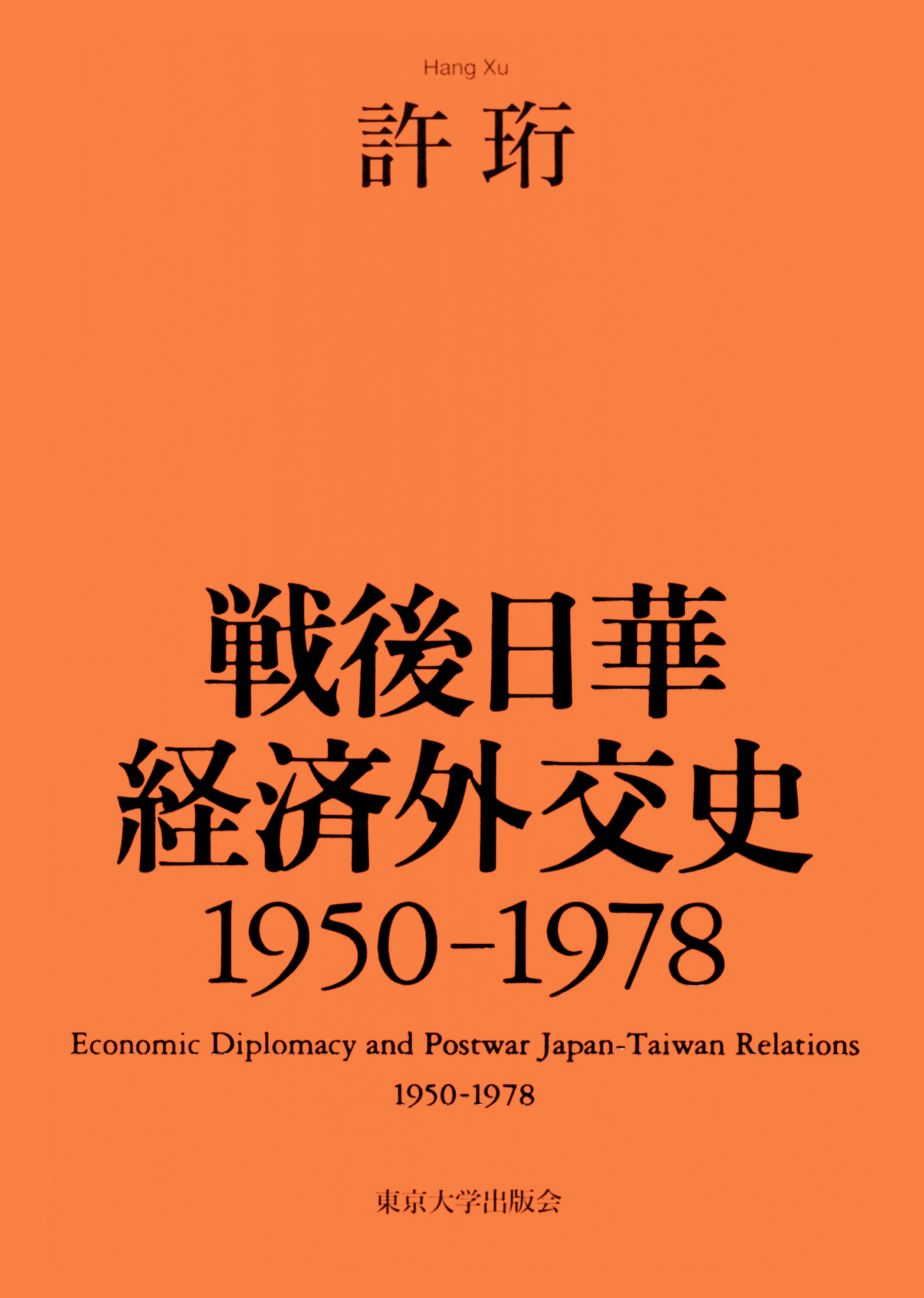
Title
Sengo Nika Keizai Gaikoushi 1950-1978 (Economic Diplomacy and Postwar Japan-Taiwan Relations)
Size
318 pages, A5 format
Language
Japanese
Released
July 12, 2019
ISBN
978-4-13-036275-7
Published by
University of Tokyo Press
Book Info
See Book Availability at Library
Japanese Page
Despite its small size, Taiwan has played a key role in the modern history of East Asia, which was always on the front line of the transformation of international order. The island was ceded to Japan after the first Sino-Japanese War, and during the Second World War, the Allies promised Chiang Kai-shek, the leader of the Republic of China, that Taiwan would be returned to China after Japan’s defeat. However, as the Chinese civil war turned against the Nationalists, and the Cold War spread to Asia, Taiwan’s political status became ambiguous and is far from being settled even today.
After the Second World War, the Nationalists lost the civil war in mainland China and retreated to Taiwan, the former colony of the Japanese empire; Japan was trapped in an especially difficult dilemma in restoring its relations with China. Under pressure from the US, Japan had no option but to establish diplomatic relations with the ROC government in Taiwan and recognize it as a legitimate government representing China. However, at the same time, Japan did not give up any opportunity to develop trade and civic relations with mainland China and the government in Beijing. After 20 years, as the ROC government lost its membership in the United Nations, and US President Richard Nixon proclaimed his visit to Beijing, the Japanese government finally took a decisive step to establish diplomatic relations with Beijing.
Postwar Japan-Taiwan (ROC) relations are often viewed as an obstacle in Sino-Japan relations—the “obstacle” was finally “cleared” in 1972. After severing their diplomatic relations, Japan and Taiwan have only continued their unofficial relations through “separation of politics and economy,” which used to apply in Sino-Japan relations before 1972. However, it is hard to understand why the Taiwan issue is still a problem in Sino-Japan relations. This book challenges the conventional narrative, which mainly focused on the question of which should be the legitimate Chinese government, and offers a new perspective to explain postwar Japan-Taiwan relations through a political economy way.
The author marshals extensive research from recently declassified archives in Japan, Taiwan, and the US to explore the economic cooperation between the Japanese and ROC governments. Compared with the overwhelming research on US’ economic aid to Taiwan, or Japan’s postwar economic aid to Southeast Asian countries and Korea, the history of Japan’s economic aid to Taiwan defies comprehension. By exploring how Japan and Taiwan negotiated on trade, loan, and economic cooperation in international economic organizations, and how they utilized the economic issue as a diplomatic tool to serve their respective purposes, this book asserts that during the process of economic negotiation, Japan and ROC gradually developed a new “diplomatic space,” which was different from the “China problem.” In other words, it was not a shift from diplomatic relations to civil relations in 1972; instead, notwithstanding the China problem, they developed a related but different road together for the future, intentionally or unintentionally right from the beginning. That explains how Japan as well as western countries tried to adjust their relations with Beijing and secure Taiwan’s interest at the same time.
(Written by: Hang Xu / October 08, 2020)



